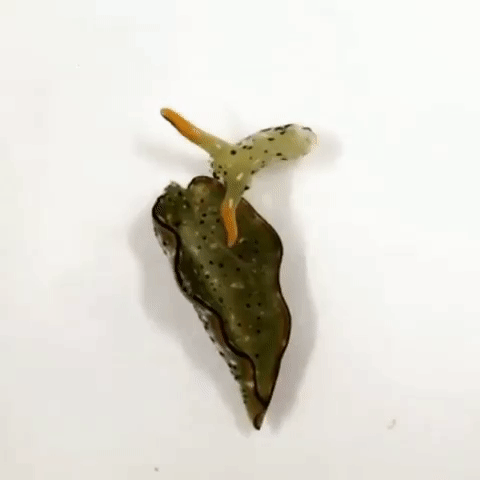todropscience:SELF-DECAPITATING BEHAVIOR SEEN IN SEA SLUGSThe body they leave behind dies.Autotom
todropscience:SELF-DECAPITATING BEHAVIOR SEEN IN SEA SLUGSThe body they leave behind dies. Autotomy, the voluntary shedding of a body part, is fairly widespread in the animal kingdom, and is generally followed by the regeneration of shed terminal body parts, but now, two japan researches have found a extrem case of autotomy in photosynthetic sea slugs.Under lab conditions, two species of Elysia sea slugs - know by their capacity to use chloroplasts from algal food into their cells to utilise for photosynthesis- were infected with parasites, after that, sea slugs self-decapitated, suggesting they do it to get rid of parasites.According to researchers, the head, separated from body and organs, moves on its own immediately after the separation (as the GIF shown). Within days, the wound at the back of the head is closed, while the head feeds on algaes. At the first week the head starte the body regeneration, and by the third week, regeneration is completed.- Head and the body of Elysia cf. marginata, a day after autotomy. The shed body is much heavier (>80% of the total weight) than the head. Photo by Sayaka Mitoh.Researchers Believe the slugs may use the photosynthetic ability of chloroplasts they incorporate from the algae in their diet, a proccess called kleptoplasty, to survive long enough for regeneration.These findings in sea slugs represent a new type of autotomy in which animals with complex body plans shed most of their body.Reference (Open Access): Mitoh and Yusa. 2021. Extreme autotomy and regeneration of the whole body in photosynthetic sea slugs. Current Biology.Gif: Movement of Elysia cf. marginata after induced autotomy. -- source link
#reblog#elysia marginata#plakobranchidae#sea slug#heterobranchia#gastropod#mollusc#regeneration#autotomy#cw decapitation#gif warning
